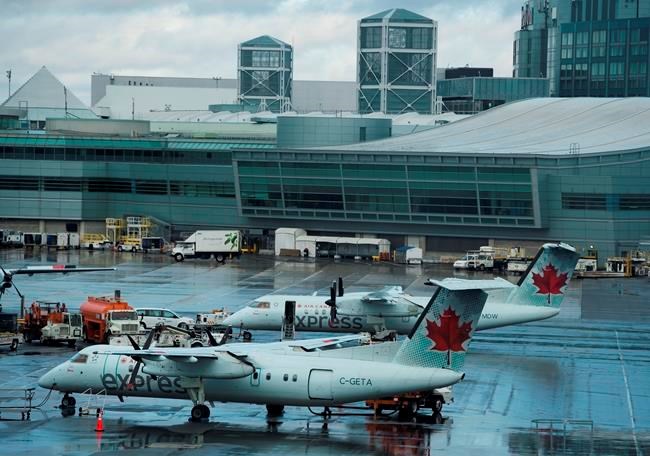MONTREAL — Canada's major airlines are relatively well-positioned to weather the financial storm that has been unleashed by the COVID-19 pandemic, but regional players may find it tougher to stay afloat, experts say.
Air Canada, which is laying off more than 5,100 flight attendants and suspending most of its routes abroad by the end of the month, has a $7.3-billion cushion to fall back on — more than the most profitable U.S. carrier, Delta Air Lines.
WestJet Airlines Ltd. has halved its domestic capacity and cancelled all overseas and U.S. routes for 30 days. The carrier has posted quarterly profits for 14 years straight, with the exception of one quarter in 2018. It is also shielded from stock market judgment after Onex Corp. acquired it in December and the company was delisted from the Toronto Stock Exchange.
Executives and lobbyists are pressing Ottawa daily for relief. While Prime Minister Justin Trudeau has announced an $82-billion aid package to help Canadians get through the novel coronavirus outbreak, none of the funding is so far earmarked for airlines.
Some countries have already tossed their carriers a financial lifeline. Norway is preparing a loan to its aviation sector worth $736 million, with about half going to the country's largest carrier, Norwegian. New Zealand has offered Air New Zealand $360 million in loans.
Jacques Roy, a professor of transport management at HEC Montreal business school, says the threat of going out of business faced by some airlines around the world is extremely unlikely at Canada's two network carriers, despite "a very bad year" ahead and Air Canada's plummeting stock price.
"They're in big trouble these days, but companies like Air Canada have some money in the bank so they can go through this difficult period without too much damage," Roy said.
In Europe, where high-speed trains and budget airlines such as EasyJet and Ryanair have eaten into flagship carriers' profits, margins can be thinner and liquidity more precarious than in North America, where ultra-low-cost carriers haven't made as significant a dent, he said.
"The airline industry globally is going to look very different than it does today," said National Bank analyst Cameron Doerksen. "There are many airlines that will probably not survive, and those that do are going to have very strange positions."
He said numbers returned to normal within two years of the Sept. 11 attacks in 2001, the SARS outbreak in 2003 and the 2008-09 financial crisis. In the case of COVID-19, it remains unclear how long the pandemic will extend before recovery can begin.
In any case, smaller airlines are in "dire straits," said John McKenna, who heads the Air Transport Association of Canada.
The trade group, which counts 30 regional carriers as members, is calling for $5 billion in grants or low-interest loans from the federal government.
"Cash flow. That's all we need right now," he said.
"What they can't do is promise us money and a year down the line," he said, citing fixed costs that can't be delayed, such as lease and loan payments on aircraft.
The National Airlines Council of Canada is asking Ottawa for relief from taxes and airport fees, but has heard no definitive response from Transport Canada.
"The situation is just so fluid," said industry group CEO Mike McNaney. "We're into completely unprecedented territory."
The disruption is poised to trickle down to manufacturers as airlines pause deliveries and new orders, rippling out to makers of engines, wings and other components.
Longview Aviation Capital Corp. said Friday it was suspending new production of Dash 8-400 and Series 400 Twin Otter aircraft in a move that will affect nearly 1,000 employees.
Flight simulator maker CAE Inc. and aircraft landing gear manufacturer Heroux-Devtek Inc. may also feel the pinch as airlines impose a pilot hiring freeze and factories ramp down jetliner production.
This report by The Canadian Press was first published March 20, 2020.
Companies in this story: (TSX:AC)
Christopher Reynolds, The Canadian Press




